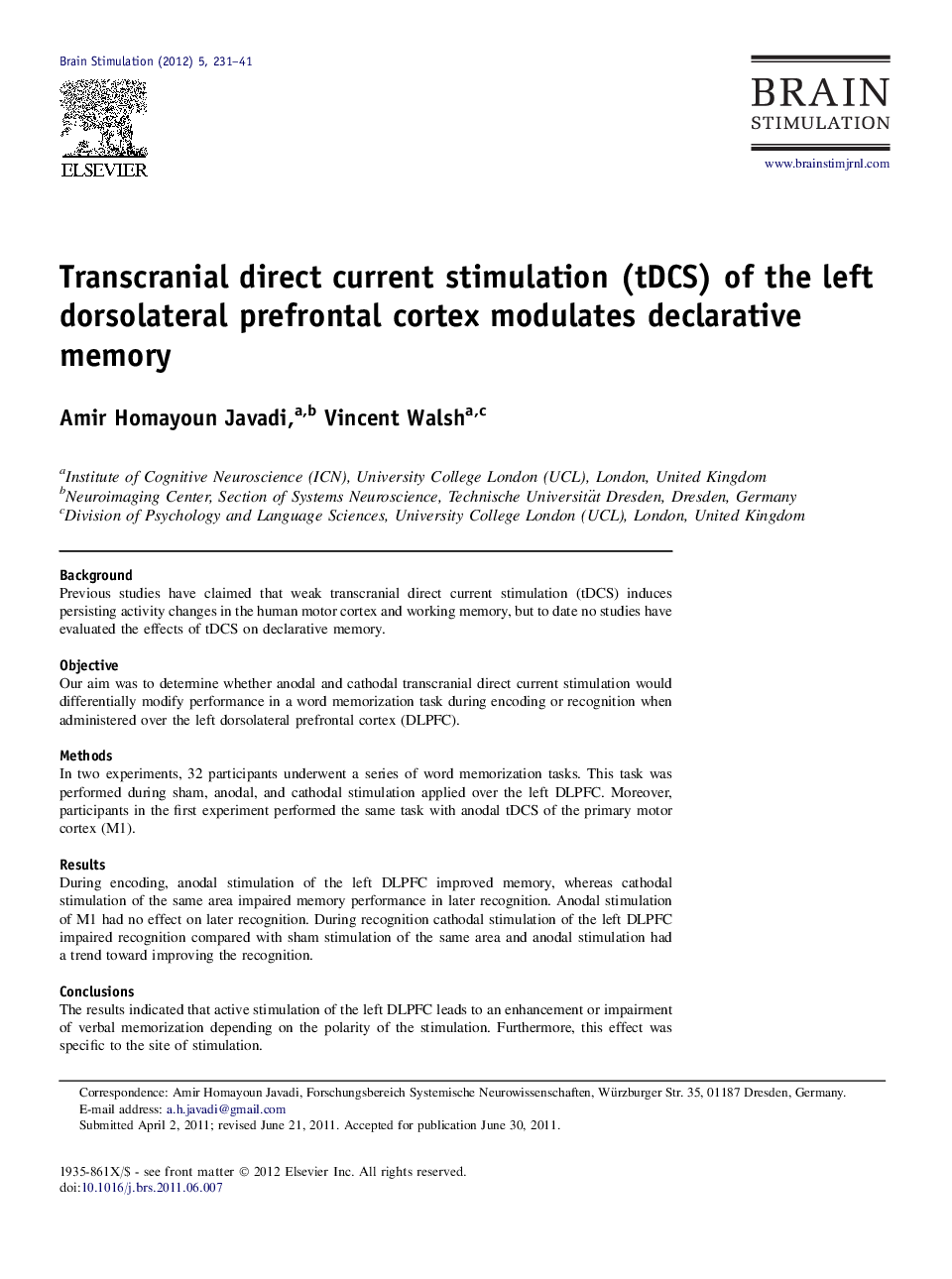| Article ID | Journal | Published Year | Pages | File Type |
|---|---|---|---|---|
| 3039099 | Brain Stimulation | 2012 | 11 Pages |
BackgroundPrevious studies have claimed that weak transcranial direct current stimulation (tDCS) induces persisting activity changes in the human motor cortex and working memory, but to date no studies have evaluated the effects of tDCS on declarative memory.ObjectiveOur aim was to determine whether anodal and cathodal transcranial direct current stimulation would differentially modify performance in a word memorization task during encoding or recognition when administered over the left dorsolateral prefrontal cortex (DLPFC).MethodsIn two experiments, 32 participants underwent a series of word memorization tasks. This task was performed during sham, anodal, and cathodal stimulation applied over the left DLPFC. Moreover, participants in the first experiment performed the same task with anodal tDCS of the primary motor cortex (M1).ResultsDuring encoding, anodal stimulation of the left DLPFC improved memory, whereas cathodal stimulation of the same area impaired memory performance in later recognition. Anodal stimulation of M1 had no effect on later recognition. During recognition cathodal stimulation of the left DLPFC impaired recognition compared with sham stimulation of the same area and anodal stimulation had a trend toward improving the recognition.ConclusionsThe results indicated that active stimulation of the left DLPFC leads to an enhancement or impairment of verbal memorization depending on the polarity of the stimulation. Furthermore, this effect was specific to the site of stimulation.
